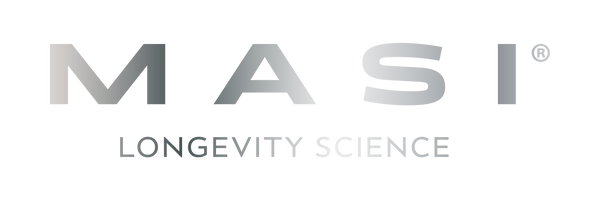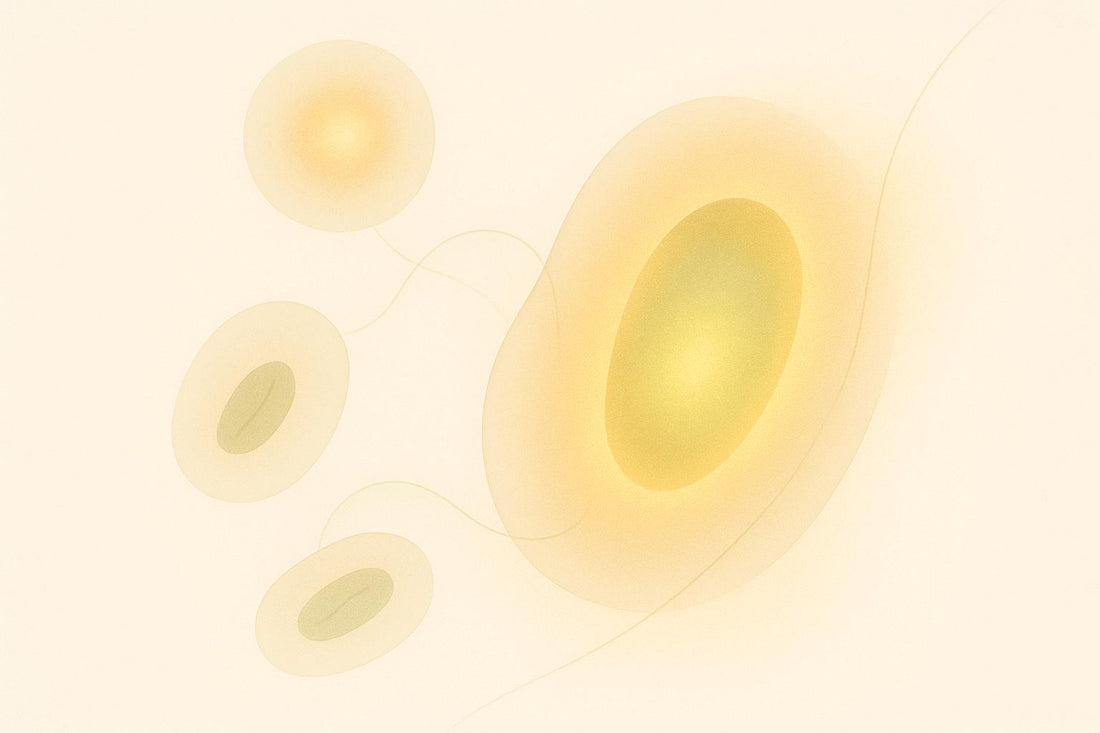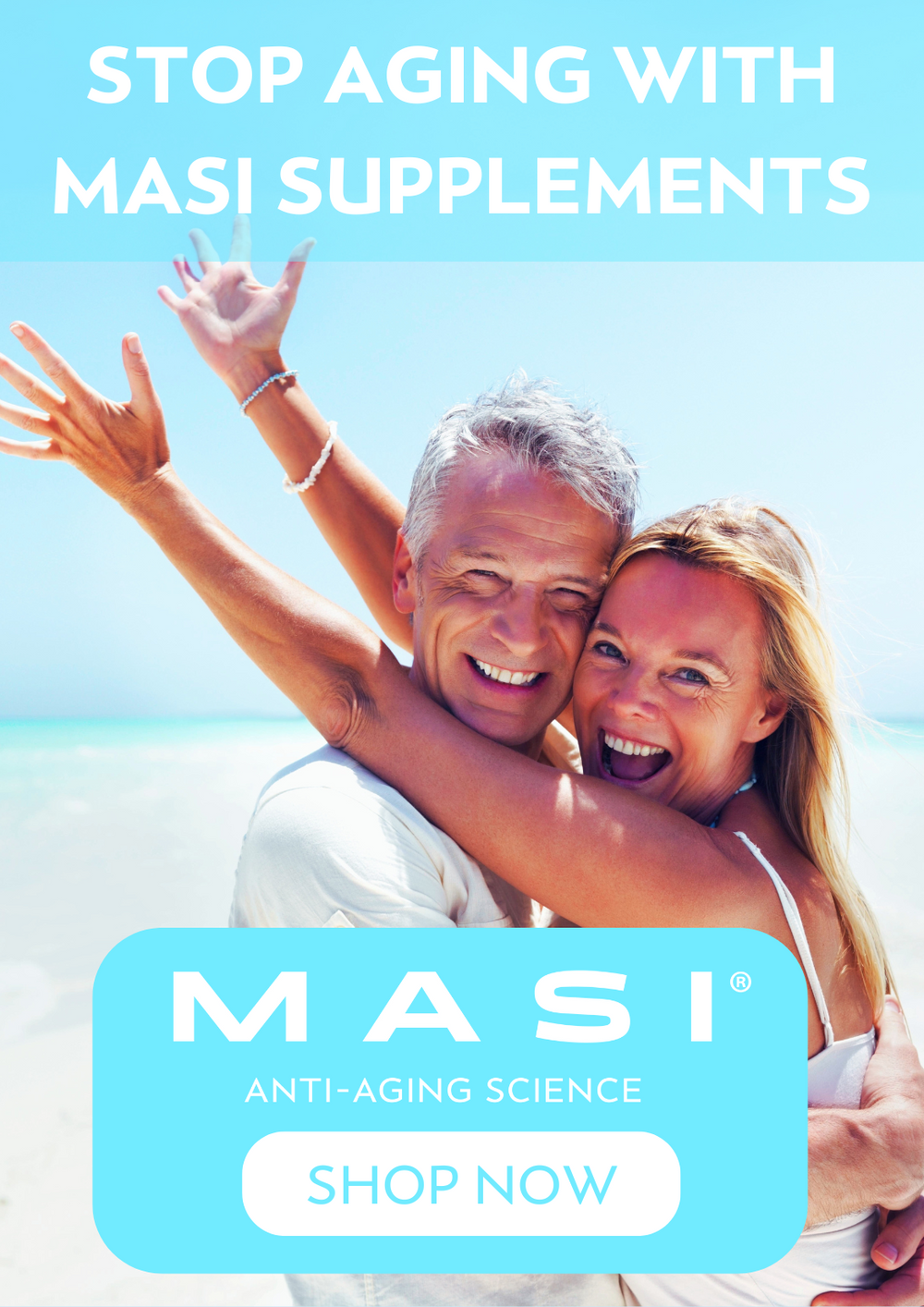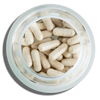HIIT can help you slow down cellular aging. Studies show that just three 23-minute sessions per week can reduce your biological age by over 3 years in one month. It works by improving mitochondrial function, reducing cellular stress, and activating repair pathways like AMPK and mTOR. Plus, it’s more effective than traditional cardio for key aging markers like DNA methylation and energy regulation.
Key Takeaways:
- Quick Results: 3 sessions per week (10×1 protocol) can lower transcriptomic age by 3.59 years in 4 weeks.
- Health Benefits: Improves body composition, sleep, mental health, and fitness.
- How It Works: Boosts energy efficiency, clears damaged cells, and reduces inflammation.
- Supplement Boost: Combining HIIT with supplements like NMN or Resveratrol can amplify anti-aging effects, especially for those over 40.
HIIT is time-efficient, effective, and works at a cellular level to promote long-term health. Keep reading to learn how to start safely and maximize benefits.
High Intensity Training and Aging: Mayo Clinic Radio
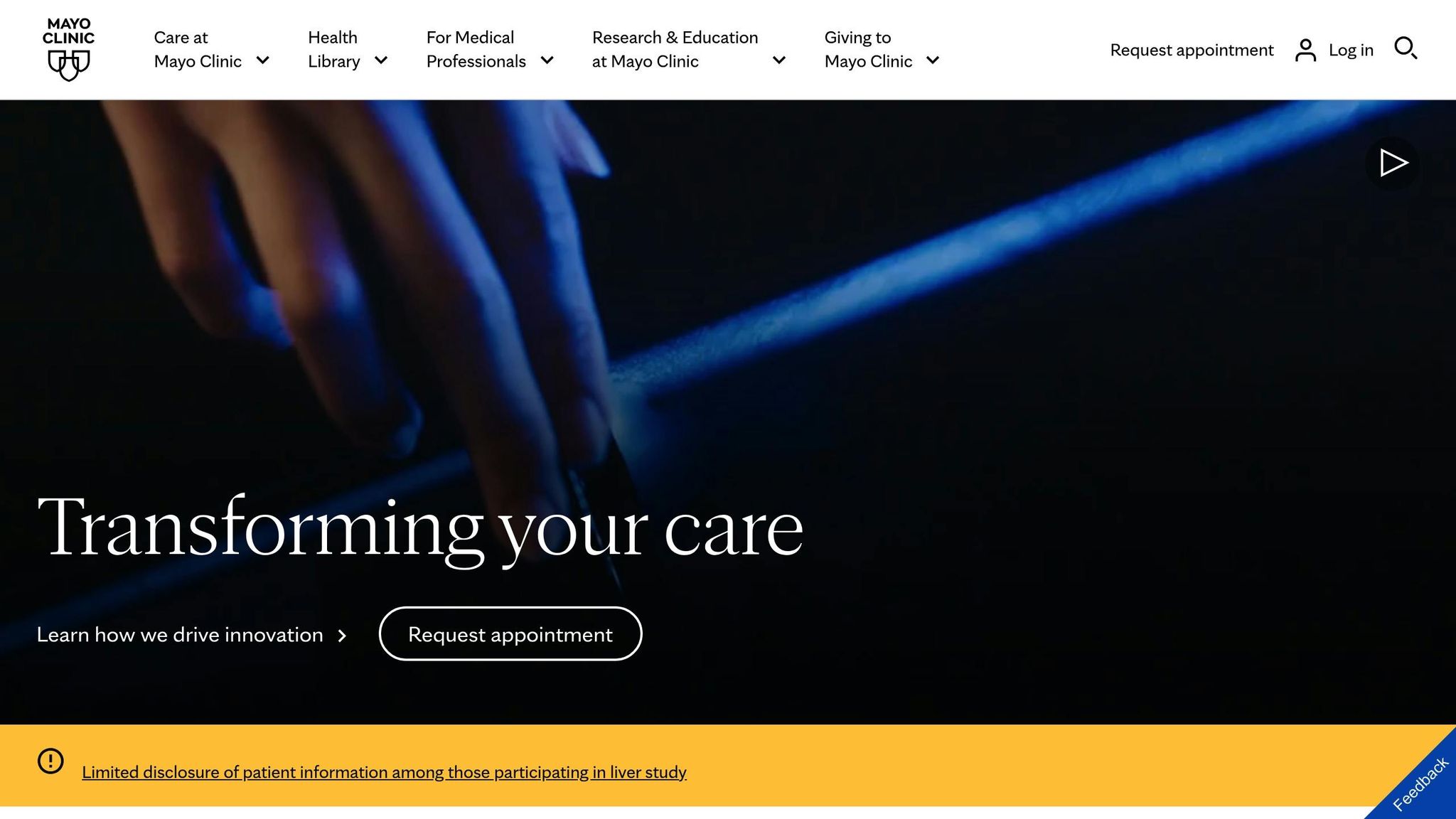
How Cells Age
The way our cells age has a direct impact on overall health. By diving into the science of cellular aging, we can better understand how high-intensity interval training (HIIT) might help reduce its effects. These biological processes provide the foundation for exploring how HIIT influences key aging markers.
Measuring Cell Age Through Transcriptomics
One way to measure cellular aging is through transcriptomic age, which looks at shifts in gene activity as we get older. Interestingly, the intensity of exercise can significantly impact these gene expression patterns. But it’s not just about genes - our cells’ ability to produce energy also plays a major role in how they age.
Mitochondrial Function in Aging
As we age, mitochondria - the powerhouses of our cells - become less efficient. This decline affects energy production, recovery, and even muscle strength. Maintaining mitochondrial efficiency is especially important for those over 40, who often experience noticeable drops in energy levels. Supporting mitochondrial health can help preserve that sense of vitality and strength [1].
Cell Damage and Aging
Over time, our cells accumulate damage from various sources like environmental stress, normal metabolic processes, inflammation, and oxidative stress. This damage can lead to the formation of senescent cells - cells that stop functioning properly but linger in the body. These cells contribute to many age-related health challenges.
Thankfully, our bodies have natural repair mechanisms to address cellular damage. Strategies like a nutrient-rich diet and targeted supplements can help rejuvenate cells, activate genes associated with youth, and clear out those senescent cells [1].
Aging at the cellular level is influenced by both the passage of time and how well we care for our cells. This underscores the importance of focused approaches to support long-term health and vitality.
HIIT Effects on Aging Markers
Recent research highlights how high-intensity interval training (HIIT) can influence cellular aging. A 2023 randomized controlled trial revealed that sedentary adults aged 40–65 reduced their transcriptomic age by 3.59 years after just one month of HIIT. In contrast, a control group showed a 3.29-year increase, resulting in a striking net difference of nearly 7 years [5][6].
These findings suggest that HIIT may be more effective at resetting aging markers compared to traditional exercise routines.
HIIT Compared to Regular Cardio
A systematic review from 2025 found that HIIT produces more pronounced changes in key aging markers, such as DNA methylation, histone modifications, and non-coding RNA expression, compared to moderate-intensity continuous training (MICT). This is likely due to the alternating high-intensity bursts and recovery periods in HIIT, which activate pathways associated with longevity [2].
Required HIIT Duration for Results
You don’t need hours of exercise to see results. Just three 23-minute HIIT sessions per week, using a 10×1 protocol (one minute of high intensity followed by a recovery period), adds up to 276 minutes per month. This modest commitment was enough to show measurable improvements in just four weeks [5][6].
The benefits of this HIIT protocol extended to multiple aging-related health markers:
| Health Marker | Observed Improvement |
|---|---|
| Body Composition | Lower BMI and body fat levels |
| Visceral Fat | Noticeable reduction |
| Sleep Quality | Better PSQI scores |
| Mental Health | Improved PHQ-9 scores |
| Physical Fitness | Higher VO₂max |
Interestingly, the intensity of exercise appears to matter more than the duration when it comes to activating anti-aging pathways. This makes HIIT an efficient option for those with limited time [3]. These findings further emphasize HIIT's role in promoting cellular repair and overall health.
How HIIT Repairs Cells
HIIT doesn’t just improve fitness - it works at a deeper level, repairing cells through specific molecular pathways. Research has shown how this intense exercise method rejuvenates cells and promotes overall cellular health.
Cellular Energy Regulation
HIIT activates two key pathways crucial for energy regulation and repair: AMPK (AMP-activated protein kinase) and mTOR (mechanistic target of rapamycin) [5][6]. These pathways play complementary roles in maintaining cellular health:
-
AMPK serves as the cell's energy sensor, kicking in when energy levels drop during intense exercise. Once activated, it:
- Boosts energy efficiency
- Triggers autophagy (the process of clearing out damaged cell components)
- Enhances nutrient processing
- Supports mitochondrial function
- mTOR, on the other hand, regulates cell growth and repair. During HIIT, it balances these processes to ensure optimal recovery.
Together, these pathways create the perfect environment for cellular repair, improving energy control and cellular efficiency. But HIIT doesn’t stop there - it also addresses cellular stress.
Fighting Cellular Stress and Damage
One of the standout benefits of HIIT is its ability to reduce cellular stress. It boosts the production of natural antioxidant enzymes, like SOD1 and SOD2, which help protect cells from damage caused by oxidative stress. At the same time, it reduces harmful pro-inflammatory molecules [4].
Here’s how HIIT stacks up against a control group when it comes to cellular health:
| Cellular Impact | HIIT Group | Control Group |
|---|---|---|
| Transcriptomic Age Change | -3.59 years | +3.29 years |
| Antioxidant Expression | Increased | No change |
| Inflammatory Markers | Decreased | No change |
| Mitochondrial Function | Improved | No change |
This data highlights the profound cellular benefits of HIIT. By combining enhanced energy regulation with reduced stress and inflammation, HIIT not only supports repair but also slows down cellular aging. These mechanisms explain why participants often see noticeable improvements in biological age markers [5][6]. It’s a workout that goes beyond the surface, working deep within to promote long-term cellular health.
sbb-itb-4f17e23
Starting HIIT Safely
HIIT can deliver impressive cellular benefits, but jumping in too quickly can lead to injuries or burnout. To truly reap its anti-aging perks, it’s essential to ease into the routine and tailor the intensity to match your current fitness level.
HIIT Programs by Age Group
Your HIIT routine should reflect both your age and fitness capacity. Younger adults often manage longer bursts of high-intensity exercise, while older adults might benefit more from shorter intervals paired with longer recovery periods. For instance, individuals in their 40s might start with moderately challenging intervals, while those over 50 could focus on shorter high-intensity efforts with more extended rest breaks.
For those over 40, incorporating supplements to support cellular health may enhance results. MASI suggests taking one capsule daily for ages 40–50, and increasing to two capsules daily for individuals over 50.
No matter your age, pair your personalized program with a strong commitment to safety.
Safety and Progress Guidelines
Before starting HIIT, it’s wise to consult a healthcare provider, especially if you have any pre-existing health conditions. Begin with a manageable intensity and gradually increase as your endurance and strength improve. If you feel dizzy, overly fatigued, or experience pain, stop immediately.
Here are some key safety tips to keep in mind:
- Always include a proper warm-up and cool-down.
- Pay attention to how your body feels during the workout.
- Stay hydrated before, during, and after exercising.
Combining HIIT with Other Anti-Aging Methods
High-Intensity Interval Training (HIIT) is already well-known for its positive impact on cellular health. But when paired with the right supplements, its benefits can go even further. This combination not only supports cellular repair but also amplifies the potential for improved longevity.
Anti-Aging Supplements and HIIT
The stress HIIT places on the body sparks cellular adaptations that are incredibly beneficial. Adding specific supplements into the mix can enhance these effects, making them even more effective. For adults regularly practicing HIIT, supplements aimed at boosting cellular repair can be a game-changer. MASI, working alongside experts from Harvard Medical School and Mayo Clinic, has developed supplements that are designed to complement HIIT perfectly [1]. Here are some key supplements they recommend:
| Supplement | Daily Dosage | Primary Benefits |
|---|---|---|
| NMN | 1,000 mg | Boosts cellular energy production |
| Resveratrol | 500 mg | Activates pathways linked to longevity |
| Spermidine | 3 mg | Encourages cellular renewal |
| Fisetin | 500 mg | Aids in removing damaged cells |
For the best outcomes, it’s essential to follow the age-specific dosage guidelines mentioned earlier [1].
MASI’s research suggests that these supplements are particularly helpful for individuals over 40. They can help maintain energy levels, improve HIIT performance, and support recovery and overall cellular health [1].
When considering supplements, always ensure they are pharmaceutical-grade and independently tested for both purity and safety. MASI Longevity Science ensures their products meet these standards, with manufacturing in Germany and testing conducted in Switzerland [1].
Conclusion
Scientific studies strongly indicate that HIIT (High-Intensity Interval Training) can play a major role in slowing cellular aging. Research highlights that even short and manageable HIIT routines can deliver impressive results. For instance, one study found a reduction of 3.59 years in transcriptomic age after just one month of training - achieved with only three 23-minute sessions per week [6]. This makes HIIT not only effective but also practical for many people.
The benefits of HIIT are tied to specific cellular processes. It triggers mechanisms like autophagy, mTOR, and AMPK signaling [5], all of which are essential for maintaining cellular health and combating age-related deterioration. Additionally, certain supplements, such as Resveratrol, can further amplify these cellular benefits [4]. MASI offers pharmaceutical-grade supplements that are independently tested in Switzerland, providing a reliable option to help enhance the positive effects of HIIT.
FAQs
How does high-intensity interval training (HIIT) enhance mitochondrial function, and why is this vital for slowing cellular aging?
When it comes to keeping your cells youthful and energetic, HIIT (High-Intensity Interval Training) has a powerful impact on mitochondrial function. These tiny structures, often called the energy powerhouses of your cells, are responsible for producing the energy your body needs to function. Unfortunately, as we age, their efficiency tends to decline.
Here's where HIIT steps in. Studies show that this form of exercise boosts mitochondrial biogenesis - the process where your body creates new mitochondria. Not only that, but it also enhances the ability of these mitochondria to produce energy more effectively.
Why does this matter? Healthier mitochondria mean less oxidative stress on your cells, better cellular repair mechanisms, and overall improved vitality. By enhancing mitochondrial health, HIIT doesn’t just improve your energy levels - it also helps slow down cellular aging, supporting your long-term health and well-being.
What safety tips should beginners follow when starting HIIT to reduce injury risk and support healthy aging?
To get started with High-Intensity Interval Training (HIIT) safely and tap into its anti-aging benefits, it's important to take a few key steps:
- Ease into it: If you're new to working out, gradually build up the intensity and duration of your sessions. This gives your body time to adjust.
- Warm up and cool down: Take time to prepare your muscles before diving in and stretch afterward to help prevent soreness and reduce the risk of injury.
- Prioritize proper form: Pay attention to your posture and technique during each exercise to avoid unnecessary strain or injuries.
- Listen to your body: If you feel dizzy, experience joint pain, or notice other signs of overexertion, take a break as needed.
HIIT isn't just about fitness - it can have a profound effect on cellular aging. Research shows it boosts mitochondrial health and can even lower your transcriptomic age. To amplify these benefits, combine regular HIIT sessions with a balanced diet and supplements designed to promote cellular renewal, like those offered by MASI Longevity Science. This holistic approach can help you feel more energized and support long-term well-being.
Can supplements like NMN and Resveratrol boost the anti-aging benefits of HIIT, and are they right for everyone?
Recent research highlights that high-intensity interval training (HIIT) can play a major role in slowing cellular aging. It does this by boosting mitochondrial health and reducing transcriptomic age - essentially helping your cells function more efficiently and stay youthful. On top of that, supplements like NMN and Resveratrol could enhance these effects by promoting energy production, aiding cellular repair, and supporting overall vitality. These compounds work on key aging mechanisms at the cellular level, potentially amplifying the positive impact of regular HIIT workouts.
That said, supplements aren’t a one-size-fits-all solution. Their effectiveness often depends on factors like your age, lifestyle, and specific health objectives. If you’re thinking about incorporating NMN, Resveratrol, or other anti-aging supplements into your routine, it’s smart to talk with a healthcare professional first. They can help you figure out what fits your unique needs and goals.
